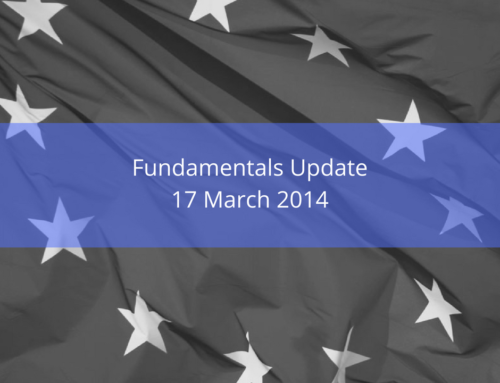The US Fed in October
Fundamentals Update as at 25 November 2013 by Lorenzo Beriozza
Tapering of asset purchases could begin “in coming months” cried the minutes of the Fed’s October policy meeting. But the other message that rings loud and clear from both the minutes and recent remarks by Bernanke and Yellen is that the Fed is thinking not so much about reducing stimulus as changing the way it’s delivered.
Tapering is coming because the QE cost-benefit trade-off is shifting toward the former the longer the program continues. Although most members (outside of serial dissenter George and a few regional hawks) aren’t too worried about the possible costs (inflation, asset bubbles) at the moment, they appear to share Bernanke’s view that, while the risks appear “manageable” now, the program risks “impairing the functioning of securities markets”. So, “many” participants at the October meeting believe tapering could begin “at one of its next few meetings”, should economic conditions improve.
While a December taper can’t be ruled out, the Fed probably won’t conclude by then that labor markets have made sufficient, sustainable progress. GDP growth looks to slow to 1.5% in Q4, albeit from a pace that could be revised above 3% because of an even larger inventory build than the BEA initially assumed in Q3. Although a solid October retail sales report suggests consumer spending growth picked up to 2.5% this quarter, and lower jobless claims flag another decent jobs report this month, higher mortgage rates have slowed the housing recovery. Moreover, the minutes acknowledged the effects of fiscal policy uncertainty on business and consumer confidence.
The Fed could hesitate to taper until lawmakers reach a budget deal that avoids another messy standoff. While a deal is likely to be reached, it’s unlikely to be signed before the December 13 deadline. But assuming a government shutdown is averted in mid-January, the debt-ceiling can gets kicked even farther downfield, and the housing market resumes an upward trend (on still-healthy affordability), tapering should begin at either the January or March meetings (and we lean to the former).
And tapering isn’t tightening, and the Fed will do all it can to avoid a repeat of last summer’s taper tantrum. The most direct way to do this is to pledge to keep the funds rate near zero well after QE ends, and perhaps well after the unemployment rate drops below the current 6.5% threshold, as favoured by a “couple” members. A “few” members think the Fed should strengthen its rate guidance by pledging not to raise rates until PCE inflation (currently 0.9%) climbs above a stated level (Bullard likes 1.5%), even if the benefits are “uncertain and likely to be modest”. But the Fed is unsure how much juice it can squeeze out of rate guidance, and is considering other measures, including, reducing the rate it pays on excess reserves to encourage bank lending (though Yellen believes this could impair money markets). In any case, new ways to prime the stimulus pump can only cement expectations that rates aren’t going anywhere fast.
As the economy gathers speed next year, the Fed will gently remove one foot from the accelerator, while continuing to press down with the other. The brake pedal is likely to remain untouched until late 2015 or even beyond.
Source: BMO Capital Markets


